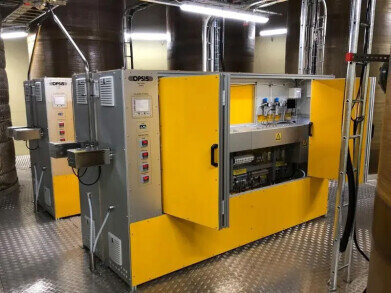Air monitoring
A complete portfolio of mercury monitoring solutions for the UK market.
Aug 01 2024
Mercury is a persistent pollutant and once in the environment, can remain there for hundreds of years. It bioaccumulates in terrestrial and aquatic food chains where it carries over into human populations. Mercury is dangerous to humans due to its overall toxicity.
Mercury occurs naturally in the earth’s crust, but anthropogenic activities like mining and fossil fuel combustion have led to global mercury pollution. Once in the atmosphere it can travel thousands of miles and enters terrestrial and aquatic ecosystems via deposition and plume grounding from chimney stacks.
Large industrial processes (Part A) fall under environment regulators such as the Environment Agency and SEPA, and strict legal permitting conditions and compliance requirements exist to limit the concentrations mercury emissions. Processes most likely to emit mercury are energy from waste and fossil fuelled power plants. The Industrial Emissions Directive (IED) sets out which plants are required to measure mercury, and whether on a continuous or periodic basis. Enviro Technology Services (ET) supplied OPSIS CEMS are MCERTS approved and can measure mercury both in the clean gas, for compliance reporting as well as in the raw gas for process control.
Mercury is also present in natural gas and LNG and needs removing at the gas processing plant before it enters the gas main. This is an expensive and complicated task, and increasingly, real-time ‘end of pipe’ measurement of mercury is required for gas purity and quality control as well as plant optimisation and preventative maintenance requirements. Trace gas mercury measurement specialists, Tekran Inc. - again, supplied by ET - specialise in this application.
If you have an environmental permit which stipulates mercury is to be measured, you should be adhering to the Best Available Techniques for your installations (BAT). Total mercury monitoring must be conducted as the mercury BAT now applies not only to atomic (metallic) mercury in the flue gas but to all gaseous substances containing mercury (known as total mercury) such as mercury chloride (HgCl2) and methylmercury (CH3Hg+).
If you have any questions on mercury monitoring, please contact the expert team at Enviro Technology Services.
Digital Edition
IET 35.2 March
April 2025
Air Monitoring - Probe Sampling in Hazardous Areas Under Extreme Conditions - New, Game-Changing Sensor for Methane Emissions - Blue Sky Thinking: a 50-year Retrospective on Technological Prog...
View all digital editions
Events
May 06 2025 Nuremberg, Germany
May 10 2025 Karachi, Pakistan
May 11 2025 Vienna, Austria
May 11 2025 Seoul, South Korea
Salon Analyse Industrielle & Instrumentation
May 14 2025 Paris, France






.jpg)


_(4427399123)-(2).jpg)









